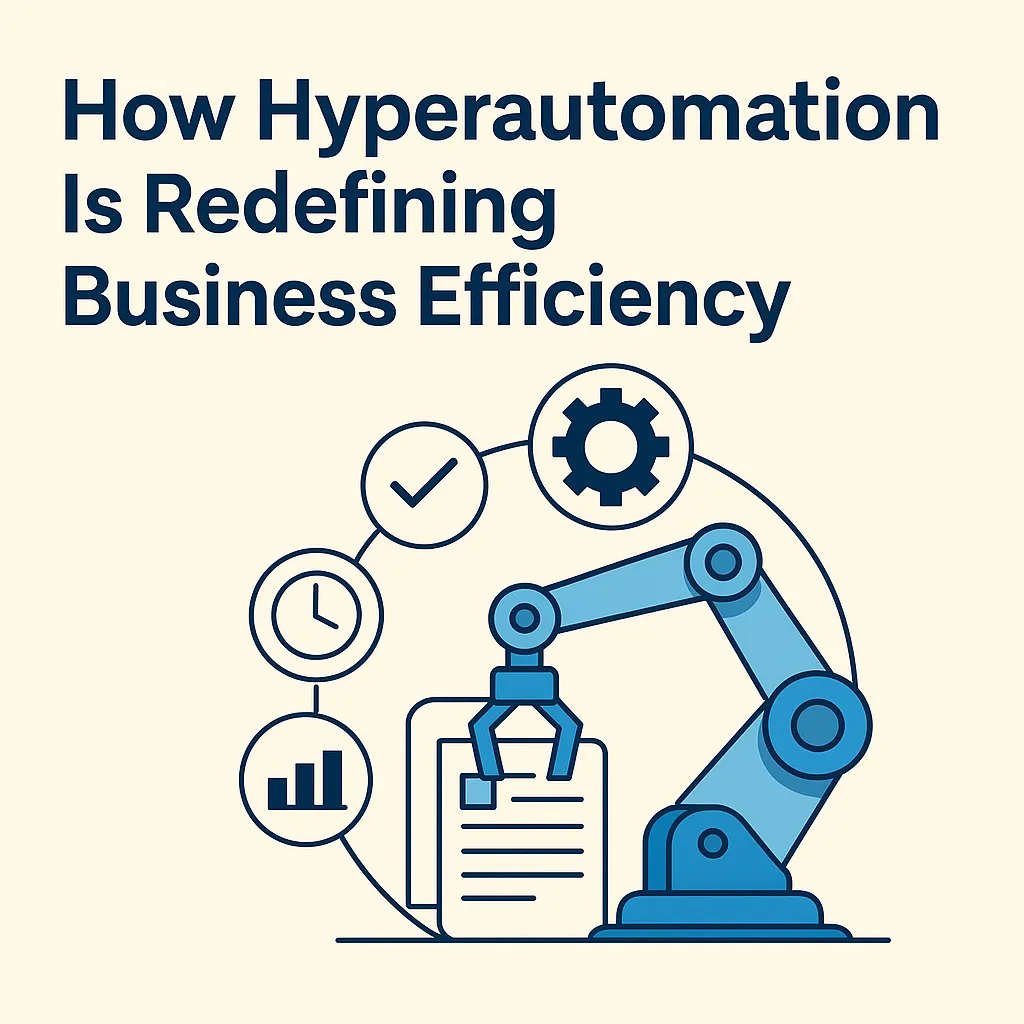How Hyperautomation is Redefining Business Efficiency
Hyperautomation is rapidly transforming the modern business landscape. As a concept that extends beyond simple task automation, it combines artificial intelligence (AI), machine learning (ML), robotic process automation (RPA), and other advanced technologies to create a highly automated, adaptive business environment. In today's fast-paced digital world, businesses are increasingly turning to hyperautomation not only to cut costs but to improve accuracy, increase productivity, and gain competitive advantage.
What is Hyperautomation?
- Hyperautomation refers to the use of multiple automation tools, such as RPA, AI, ML, and analytics, to augment and automate as many business processes as possible.
- It is not limited to automating repetitive tasks but also focuses on orchestrating intelligent systems that can adapt, learn, and optimize operations over time.
- The key idea is to create a digital workforce that complements human employees and elevates business capabilities.
Key Technologies Enabling Hyperautomation
- Robotic Process Automation (RPA)
RPA automates routine, rules-based tasks, such as data entry, report generation, and form processing.
- Artificial Intelligence (AI) and Machine Learning (ML)
AI and ML enable systems to learn from data, make decisions, and even predict outcomes with minimal human intervention.
- Process Mining and Analytics
These tools analyze existing processes to identify bottlenecks and recommend areas suitable for automation.
- Intelligent Document Processing
Hyperautomation uses NLP and OCR to read, understand, and process unstructured data such as emails, invoices, and contracts.
- iBPMS (Intelligent Business Process Management Systems)
These systems help orchestrate complex processes by integrating various automation components and managing workflows end-to-end.
How Hyperautomation Improves Business Efficiency
- Enhanced Productivity
By automating time-consuming and repetitive tasks, employees can focus on higher-value work such as strategy and innovation.
- Improved Accuracy
Automation reduces the risk of human errors in data handling, thereby improving the quality and reliability of business processes.
- Faster Turnaround
Processes like customer onboarding, compliance checks, and financial reporting can be completed much faster through hyperautomation.
- Scalability
Businesses can scale operations more easily without a proportional increase in human resources, leading to cost savings.
- Data-Driven Decision Making
With advanced analytics and real-time data processing, organizations can make informed decisions quickly and confidently.
Use Cases of Hyperautomation
- Finance and Accounting
Automating invoice processing, auditing, expense reporting, and reconciliation to minimize manual work and improve accuracy.
- Customer Service
AI-powered chatbots and virtual assistants provide instant support, while RPA handles backend tasks like ticket routing.
- Human Resources
Resume screening, interview scheduling, and employee onboarding are streamlined using intelligent automation tools.
- Supply Chain Management
Automating inventory tracking, procurement, and logistics processes helps reduce delays and optimize resource allocation.
- Healthcare
Automating patient record management, appointment scheduling, and billing can improve service delivery and compliance.
Challenges in Implementing Hyperautomation
- Integration Complexity
Integrating various tools and technologies with legacy systems requires technical expertise and strategic planning.
- High Initial Investment
The cost of adopting multiple technologies can be high initially, but long-term benefits often justify the expense.
- Change Management
Employee resistance and fear of job loss may hinder adoption unless there is effective communication and training.
- Security and Compliance
As automation tools handle sensitive data, ensuring proper security controls and regulatory compliance is crucial.
Best Practices for Successful Hyperautomation
- Start Small and Scale
Begin with a few high-impact processes and gradually expand automation across departments.
- Define Clear Objectives
Align automation initiatives with business goals to measure success effectively.
- Invest in Skills and Training
Equip your workforce with the knowledge to work alongside digital tools and maximize value.
- Monitor and Optimize Continuously
Use analytics to track performance, identify gaps, and refine processes over time.
- Choose the Right Tools
Select platforms that are scalable, compatible with your IT ecosystem, and offer robust support and community.
Future Outlook
- As AI and ML continue to evolve, hyperautomation will become smarter, faster, and more autonomous.
- It will play a key role in shaping digital transformation strategies, making businesses more agile and resilient.
- Organizations that adopt hyperautomation early will likely gain a lasting competitive edge.
Conclusion
- Hyperautomation is not just a trend — it’s a strategic imperative for businesses looking to thrive in the digital age.
- By leveraging the synergy of RPA, AI, analytics, and process management, companies can unlock new levels of efficiency and innovation.
- The journey may involve challenges, but with a clear strategy and strong execution, the rewards are substantial.
